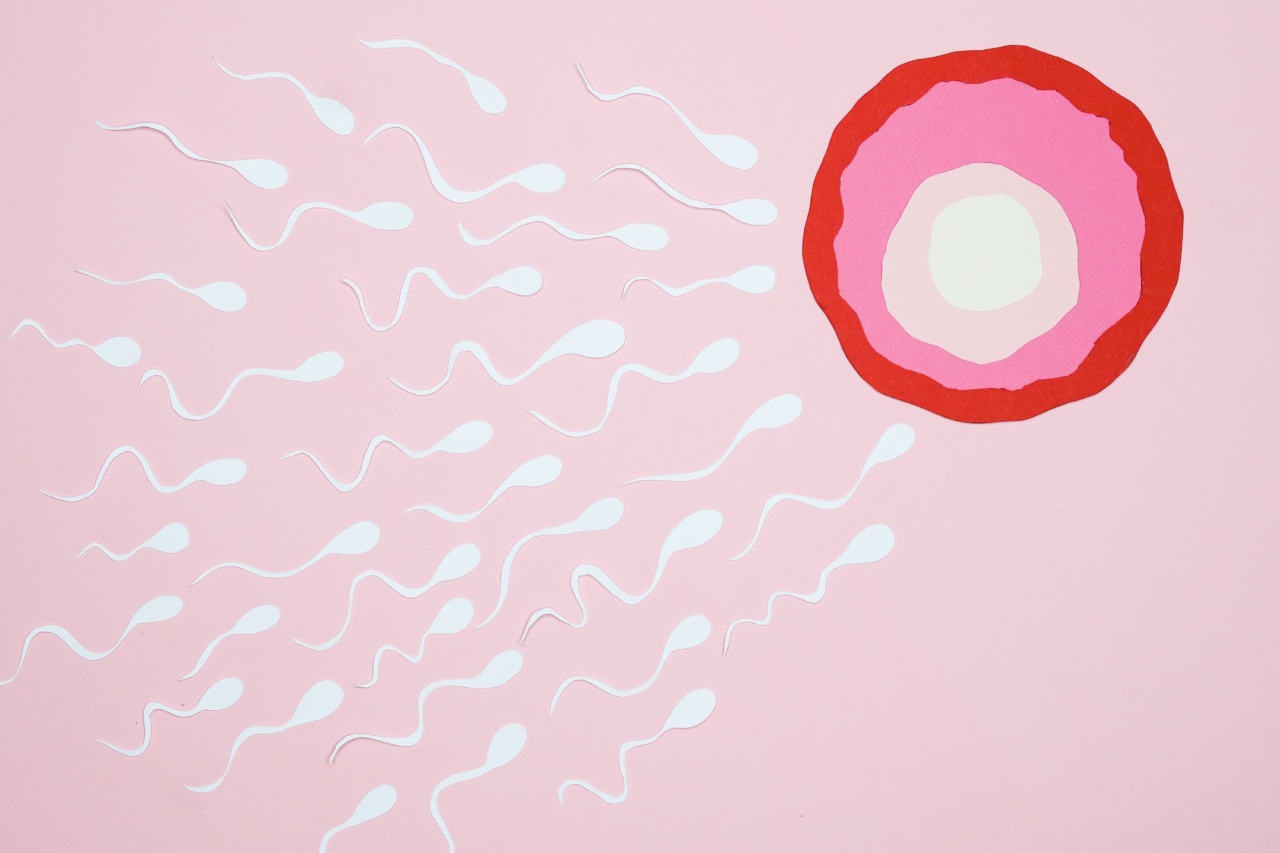Conception is the process of fertilization, where a sperm cell merges with an egg cell to form a zygote, which eventually develops into an embryo.
For many couples struggling with infertility, conception may not happen naturally, and they may turn to fertility treatments to increase their chances of conceiving. Fertility treatments are designed to help overcome various fertility issues and improve the odds of successfully conceiving a child.
However, it’s essential to understand the conception odds associated with these treatments to manage expectations and make informed decisions.
The Different Types of Fertility Treatments
Fertility treatments come in various forms, and the type of treatment recommended depends on the underlying cause of infertility. Here are some of the most common fertility treatments:.
1. Intrauterine Insemination (IUI)
Intrauterine insemination, commonly known as IUI, involves the introduction of washed sperm directly into the woman’s uterus. This procedure helps bypass any potential barriers the sperm may face in reaching the egg.
IUI is often used when there are issues with sperm quality or the cervix, making it harder for sperm to reach the egg.
2. In Vitro Fertilization (IVF)
In vitro fertilization, or IVF, is a more complex fertility treatment. It involves the retrieval of eggs from the woman’s ovaries, which are then fertilized with sperm in a laboratory setting.
The resulting embryos are then transferred back into the woman’s uterus, increasing the chances of successful implantation and pregnancy.
3. Intracytoplasmic Sperm Injection (ICSI)
Intracytoplasmic sperm injection, or ICSI, is often used in conjunction with IVF. It involves the direct injection of a single sperm into the egg to facilitate fertilization.
ICSI is particularly useful in cases where there are severe male infertility issues, such as low sperm count or poor sperm motility.
4. Fertility Medications
Fertility medications, such as clomiphene citrate or letrozole, are often prescribed to women who have difficulty ovulating regularly. These medications help stimulate the development and release of eggs, increasing the chances of conception.
The Conception Odds
Conception odds vary depending on several factors, including the type of fertility treatment being used, the age and overall health of both partners, and the underlying cause of infertility.
It’s important to understand that fertility treatments do not guarantee success, but rather improve the chances of conception.
1. Intrauterine Insemination (IUI) Odds
The success rates of IUI depend on various factors, including the woman’s age, the quality of the sperm used, and the presence of any underlying fertility issues. On average, the success rate of IUI is around 10-20% per cycle.
However, with multiple cycles, the cumulative success rate can increase up to 80% over six cycles.
2. In Vitro Fertilization (IVF) Odds
The success rates of IVF depend on several factors, such as the woman’s age, the cause of infertility, and the quality of the embryos transferred. On average, the success rate of IVF is around 30-40% per cycle for women under 35 years old.
However, the success rates gradually decrease with age. For women over 40, the success rates drop to around 10-20% per cycle.
3. Intracytoplasmic Sperm Injection (ICSI) Odds
The success rates of ICSI are often higher than those of conventional IVF, especially in cases of severe male infertility.
The chances of success also depend on the woman’s age, the quality of the eggs, and the expertise of the embryologists performing the procedure. On average, the success rates of ICSI range from 70-80% per cycle for women under 35, gradually decreasing with age.
4. Fertility Medication Odds
The success rates of fertility medications vary depending on the underlying cause of infertility. These medications can significantly improve the chances of ovulation and conception, especially in cases of irregular ovulation.
The success rates range from 20-60% per cycle, depending on factors such as age, overall health, and the specific medication being used.
Factors Affecting Conception Odds
While fertility treatments can increase the odds of conception, several factors can impact the overall success rates. Some of these include:.
1. Age
Age plays a significant role in fertility, with a decline in both egg quality and quantity as women get older. Women over 35 generally have reduced conception odds, and the success rates of fertility treatments also decrease with age.
2. Lifestyle Factors
Lifestyle factors such as smoking, excessive alcohol consumption, poor diet, and high stress levels can negatively impact fertility. Making healthy lifestyle choices can improve conception odds and the overall success of fertility treatments.
3. Underlying Medical Conditions
Certain underlying medical conditions, such as endometriosis, polycystic ovary syndrome (PCOS), or blocked fallopian tubes, can affect fertility. Addressing these conditions alongside fertility treatments can improve the chances of conception.
4. Male Infertility
Male infertility factors, such as low sperm count or poor sperm quality, can also affect conception odds. In such cases, fertility treatments may need to be tailored to address the specific male infertility issues.
Conclusion
Fertility treatments offer hope to couples struggling with infertility, but it’s important to have realistic expectations about the conception odds associated with these treatments.
Each type of fertility treatment comes with its own success rates, and individual factors such as age, overall health, and underlying causes of infertility can influence the chances of successful conception. Consulting with a fertility specialist can provide personalized guidance and help determine the most suitable treatment option based on the specific circumstances.
While fertility treatments cannot guarantee a successful conception, they significantly improve the odds of starting or expanding a family.






























